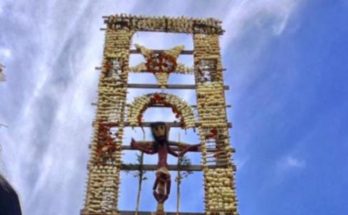By Arturo Morales Tirado
Geologically, geographically, and even culturally, we continue to hear from politicians, communicators, and even social science researchers and scholars say the entire state of Guanajuato is part of El Bajío (the Lowlands). Some even include the state of Aguascalientes. I repeat, in general geographical terms, this is inaccurate. In an elementary geography book, El Bajío and the area of the Altos de Guanajuato (Highlands) are clearly separate areas, with the Bajío toward the south and with the Highlands toward the north with the municipalities of Guanajuato, San Miguel de Allende, Dolores Hidalgo, San Felipe, San Diego de la Unión, and Ocampo, with part of the municipalities of San José Iturbide, Doctor Mora, and San Luis de la Paz.
As we have mentioned in previous installments, to understand the past, it’s essential to understand the context of past events. We must observe and consider their time, space, and circumstances, such as the governance, economy, society, culture, and ecology of the time such as the society New Spain that populated the territory of the frontier of the Tierra Adentro for almost three centuries. The area was demarcated more by nature without the impact of humans, refined more by the geology and geography of this borderland between volcanic Mesoamerica to the south and semi-desert Arid America to the north. This borderland includes a small part of the lowlands, or Bajío, of the low volcanic valleys around the basin of the former Grande River that we now know as the Lerma River, which originates in the springs of Almoloya and others around the Nevado de Toluca volcano.
In this great Lerma River basin, the Bajío begins in the east in the Queretaro rivers of San Juan and Querétaro. Further north, in the state of Guanajuato, the Bajío includes the lower basin of the Laja River, starting from Puerto de Calderón in San Miguel de Allende, crossing the municipality of Comonfort, skirting the volcanoes Palo Huérfano, San Pedro, and La Gavia. Other northern rivers of the Bajío Guanajuatense are the Tamascatío, Guanajuato, Silao, Santa Ana, and Turbio rivers. Finally, the Bajío Guanajuatense is made up, from east to northwest, in addition to Comonfort, by the municipalities Apaseo el Grande, Apaseo el Alto, Tarimoro, Jerécuaro, Celaya, Villagrán, Cortazar, Salamanca , Pueblo Nuevo, Irapuato, Tarimoro, Salvatierra, Acámbaro, Yuriria, Uriangato, Valle de Santiago, Huanímaro, Abasolo, Cuerámaro, Pénjamo, Romita, Silao, and León.
In contrast to the Bajío are the Altos the Guanajuato (the Highlands). The physiography, geology, and geography of the Altos de Guanajuato produce mostly infertile lands, with little arable soil sometimes found between mountains. This forced another adaptation of the human inhabitants of these difficult, complex ecosystems that shaped the long-term human impact on this territory of Arid America. Part of the difference between the Bajío of Guanajuato and the Altos de Guanajuato is that during the Viceroyalty, the landscape and the mode of agricultural and livestock production were transformed with the construction of countless dams and reservoirs throughout the upper basin of the Laja River. Dams were constructed across the region, from its source springs in the Sierra de Lobos above León, plus those in Cuatralba, Santa Bárbara, and El Cubo, in the northwest, to Puerto de Calderón, Palo Huérfano (Los Picachos), and Támbula-La Joya, plus the Sierra de Codornices (Mesa del Gato and Sierra Morena), to the south of this Upper Sub-basin of the Laja River, or Los Altos de Guanajuato.
Toward the end of the 16th century, the Chichimeca War came to an end. The war took place in the Altos de Guanajuato and parts of the semi-desert areas of Aguascalientes, San Luis Potosí, Jalisco, and Zacatecas. Taking advantage of the physiography of this region around the tributary rivers of the upper basin of the Laja River, landowners and those who held mercedes (concessions) for water, agricultural work, and cattle ranches built dozens of dams to promote agricultural and livestock production.
In a brief account of some of the most significant surface water dams in the Altos de Guanajuato, most of these around the large agricultural estates and cattle ranches, we mention the following: La Cieneguita and La Quemada in San Felipe; La Tinaja and Ibarrilla in Ocampo; Vallado, Monjas, Guadalupe, and San Franco in San Diego de la Unión; and El Gallinero and San Francisco de la Erre in Dolores Hidalgo. In the current municipality of San Miguel de Allende, here in the lower part of the Upper Subbasin of the Laja river, among others are La Estancia, Atotonilco, Santa Rosa, San Isidro, Trojes de Belén, El Fraile, Calderón, El Obraje, El Batán, San Pedro de Landeta, El Carrizal, and Puerto de Nieto.
These viceroyalty water dams, some built stepped with gabions or with rectangular, cylindrical, or mixed buttresses, undoubtedly constitute Wonders of our Frontera Tierra Adentro (Inland Frontier) due to their authentic, unique, unrepeatable, and exceptional character.




